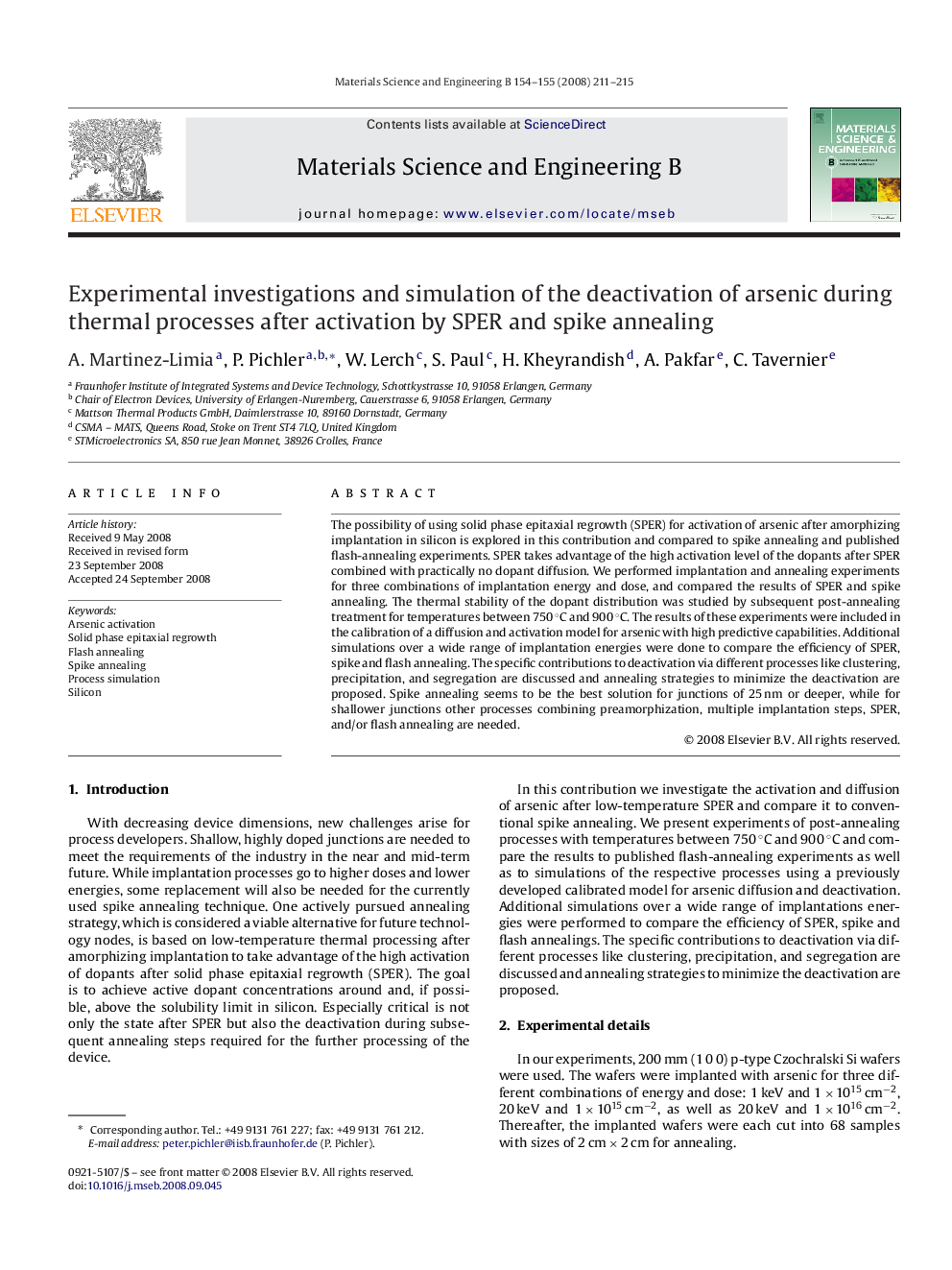| Article ID | Journal | Published Year | Pages | File Type |
|---|---|---|---|---|
| 1531083 | Materials Science and Engineering: B | 2008 | 5 Pages |
The possibility of using solid phase epitaxial regrowth (SPER) for activation of arsenic after amorphizing implantation in silicon is explored in this contribution and compared to spike annealing and published flash-annealing experiments. SPER takes advantage of the high activation level of the dopants after SPER combined with practically no dopant diffusion. We performed implantation and annealing experiments for three combinations of implantation energy and dose, and compared the results of SPER and spike annealing. The thermal stability of the dopant distribution was studied by subsequent post-annealing treatment for temperatures between 750 °C and 900 °C. The results of these experiments were included in the calibration of a diffusion and activation model for arsenic with high predictive capabilities. Additional simulations over a wide range of implantation energies were done to compare the efficiency of SPER, spike and flash annealing. The specific contributions to deactivation via different processes like clustering, precipitation, and segregation are discussed and annealing strategies to minimize the deactivation are proposed. Spike annealing seems to be the best solution for junctions of 25 nm or deeper, while for shallower junctions other processes combining preamorphization, multiple implantation steps, SPER, and/or flash annealing are needed.
